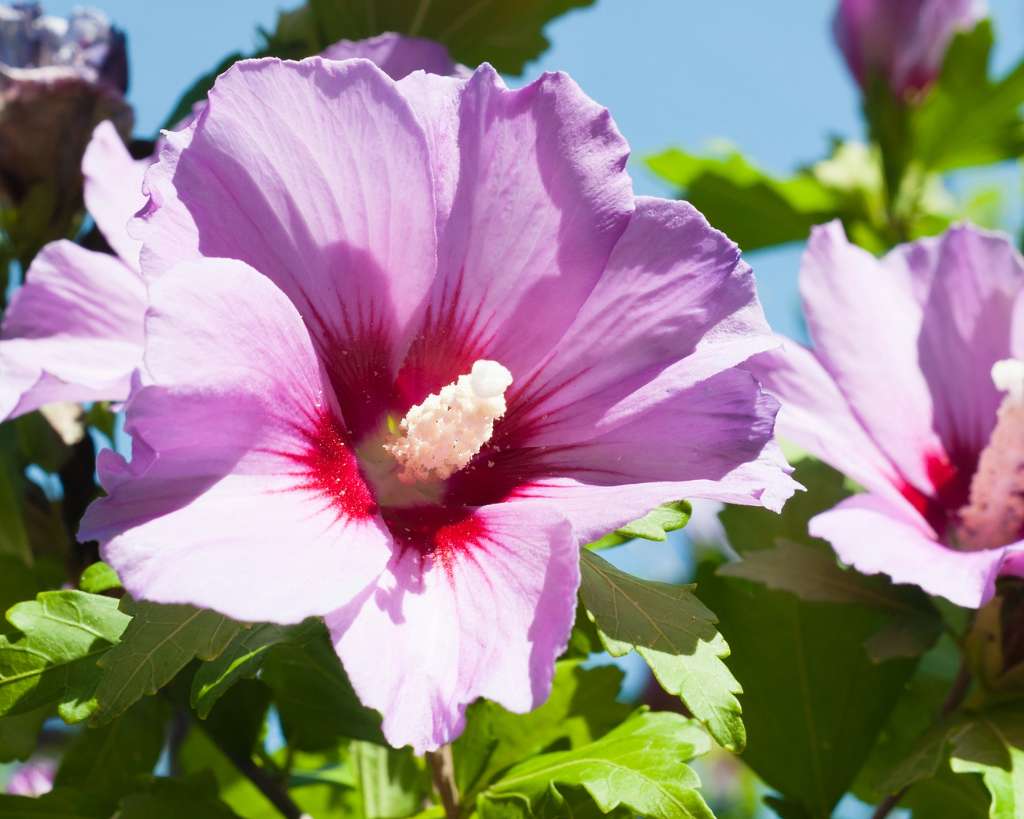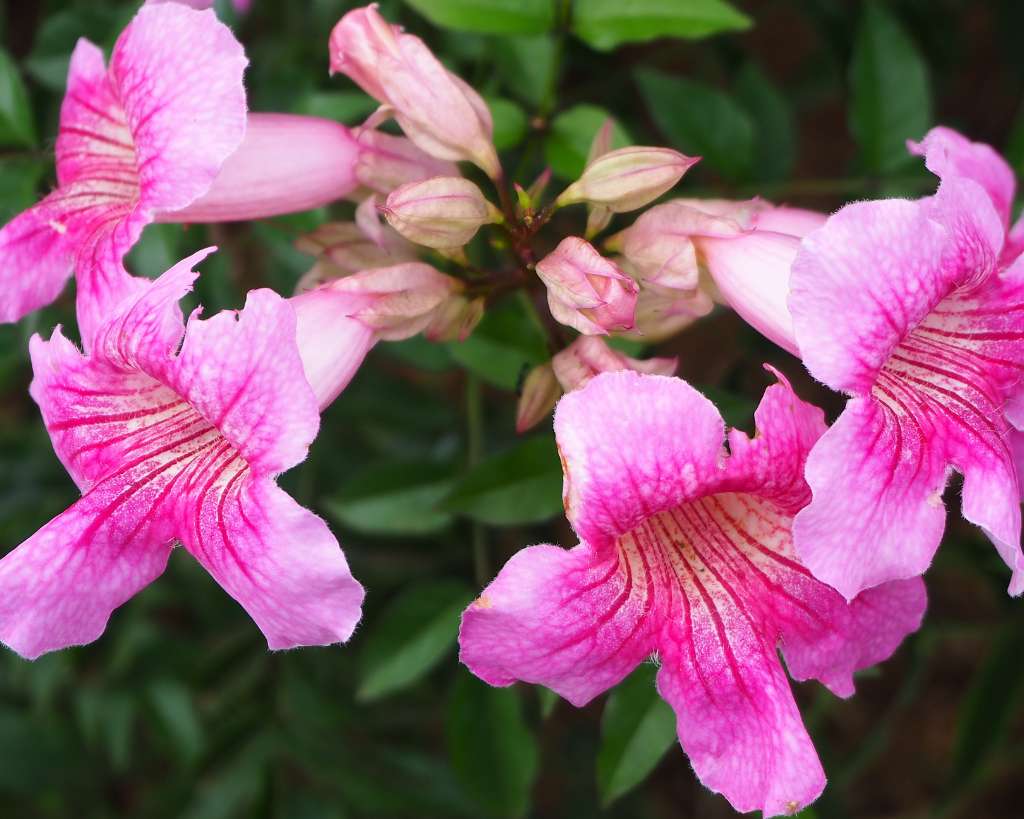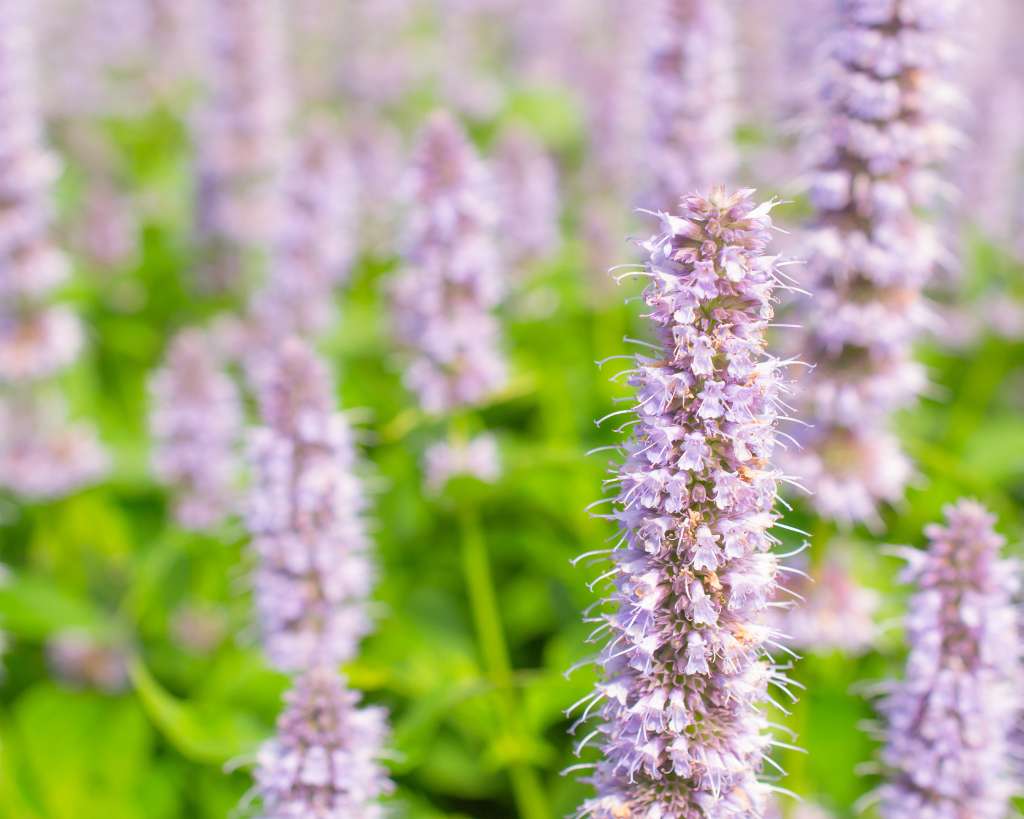Do you want to add a pop of pink to your garden while conserving water? Look no further than drought tolerant plants with pink flowers! These stunning plants provide aesthetic value and save you from the hassle of constant watering during hot and dry weather conditions.
Pink flowers are incredibly diverse, with a wide range of shades and hues that can suit different tastes and preferences. For example, some pink flowers are light and delicate, almost white. In contrast, others are bold and vibrant, with deep magenta or fuchsia tones.
Here are the 12 best drought tolerant plants with pink flowers that you can grow easily.
Mexican Evening Primrose (Oenothera berlandieri(speciosa))

Mexican Evening Primrose, also known as Oenothera berlandieri, is a stunning flowering plant native to Texas and Mexico. This herbaceous perennial is known for its bright pink or magenta flowers that bloom in the late afternoon and early evening, adding a vibrant splash of color to any garden landscape.
The flowers of the Mexican Evening Primrose are large, showy, and open wide to reveal a striking yellow center. Pollinators like bees, butterflies and hummingbirds are attracted by the fragrant smell of Evening Primrose flowers. The blooming period usually starts from late spring and remains up to early fall.
This plant is versatile and can be used as ground cover or planted in borders, rock gardens, or containers. It can be planted with other drought-tolerant plants such as Lavender, Catmint, Salvia, and Yarrow. Incorporate them in a garden bed, creating a colorful and cohesive look. Consider planting them in groupings, allowing their colors to intermingle and provide a visual contrast. To add depth and dimension, place taller plants like salvia in the back and shorter plants like Mexican Evening Primrose in the front.
Rose of Sharon (Hibiscus Syriacus)

The Rose of Sharon is a beautiful flowering shrub native to Asia. It is also known as Syrian ketmia, shrub althea, and rose mallow in different parts of the world. It is a deciduous plant that can grow up to 10 feet tall and 6 feet wide, making it an excellent choice for creating a focal point in any garden landscape.
The Rose of Sharon blooms from mid-summer to early fall, producing large, beautiful flowers in shades of white, pink, blue, and purple. The flowers can be single or double, typically having a distinctive red center. It is a huge attraction for pollinators. It is also deer resistant.
Rose of Sharon can be used as a focal point, hedge, or screen in a garden design. Consider pairing it with plants like Agastache, Yarrow, or Mexican Evening Primrose. These plants have similar water requirements and complement the colorful blooms of the Rose of Sharon.
Aphrodite, Minerva, Diana, Pink Chiffon, and China Chiffon are some of its varieties with pink flowers.
Desert Rose (Adenium obesum)

Desert Rose is a stunning succulent plant native to the arid regions of Africa and the Middle East. It is a small, slow-growing tree reaching up to 10 feet tall. It is popular for gardeners looking for a unique and visually striking addition to their garden landscape.
The Desert Rose displays stunning and vibrant flowers that range from shades of pink and red to white and yellow. The flowers typically bloom in clusters and have a distinctive shape, with a wide, flared trumpet-like opening. The Desert Rose’s blooms are a magnet for hummingbirds and butterflies.
The Desert Rose can be used in various garden landscapes, including desert-themed gardens, rock gardens, and mixed plantings. It can also be grown indoors as a houseplant if it receives adequate light and temperature. However, it requires less water to thrive.
Some great companion plants to grow alongside Desert Rose include Agave, Euphorbia, and Yucca, as they are drought-tolerant and have a similar aesthetic. Additionally, incorporating succulents, cacti, and other plants that thrive in arid environments can complement the Desert Rose and create a cohesive desert-themed landscape.
Yarrow (Achillea millefolium)

Yarrow is a versatile and hardy perennial herb native to Europe and Asia. It is a drought-tolerant plant often grown for its attractive, fern-like gray-green foliage and clusters of small, showy flowers that bloom in summer. The flower heads of the yarrow are composed of many small, tightly-packed flowers that form a flat-topped cluster. Each flower has five petals which can be pink, white, yellow, or red.
Yarrow can be planted in various garden landscapes, including meadows, borders, and rock gardens. It is also commonly used in herbal medicine for its medicinal properties, including its ability to treat wounds and fever.
With yarrow, you can also plant fellow drought plants such as lavender, salvia, echinacea, and lamb’s ear. It is important to consider its tendency to spread quickly and plant it in areas where it can be easily managed or contained.
Some beautiful pink flowering varieties of yarrow are Cerise Queen, Summer Berries, Paprika, Red Velvet, Saucy Seduction, and Strawberry Seduction.
Pink Trumpet Vine (Podranea ricasoliana)

The pink Trumpet Vine is a stunning climbing plant native to southern parts of Africa. It is a vigorous and fast-growing vine that can reach up to 30 feet in height and 6 feet in width, making it an ideal choice for gardeners looking for a plant that can provide ample coverage and beauty.
Pink Trumpet Vine produces many beautiful, trumpet-shaped pink flowers that bloom throughout the summer and fall. Pollinators like bees and butterflies love to gather around its fragrant, beautiful flowers. Its dark green, glossy foliage create a striking backdrop for the flowers.
It is a low-maintenance plant that is easy to grow and requires minimal pruning and watering once established. It can be grown on a trellis, pergola, or other support structure and can be trained to climb up walls and fences.
Pink Trumpet Vine can be used in various garden landscapes, including cottage gardens, Mediterranean gardens, and tropical gardens. It is also popular for container gardening, as it can be grown in large pots and placed on patios and balconies.
To increase the aesthetic appeal of your garden, you can consider growing pink trumpet vines with similar drought-resistant plants such as Lantana, Lavender, Mexican Bush Sage, Bougainvillea, and Dusty Miller.
When designing a landscape with Pink Trumpet Vine, it is important to consider the height and spread of each plant, as well as their watering and sun exposure requirements, to ensure they grow well together. Make sure to keep appropriate distance between the plants to enhance the look of your garden.
Chrysanthemums (Chrysanthemum morifolium)

Chrysanthemums are a popular and beloved flower that is native to East Asia. They are hardy perennial plants that bloom in late summer and autumn, providing a burst of color to any garden landscape. The showy blooms of Chrysanthemums come in different colors such as pink, red, yellow, white and purple. They are known for their intricate and delicate petal formations.
You can grow this plant in different garden settings such as rock gardens, borders, containers, and water-wise gardens. Their long-lasting blooms make them a popular choice for cut flower arrangements. They are commonly used in floral decorations as well.
Chrysanthemums symbolize autumn and are widely used in festivals and celebrations worldwide. In some cultures, they are also associated with honor, loyalty, and love. Chrysanthemums are a popular choice for adding color and beauty to fall gardens. They can be grown as perennials or annuals, depending on the climate.
Chrysanthemums grow well with similar drought-tolerant plants such as asters, daisies, black-eyed Susans, and ornamental grasses. These plants have similar growing requirements and complement the colors and textures of chrysanthemums. Other good companion plants for chrysanthemums include salvias, sedums, and verbenas.
Pink Daisy Chrysanthemum, Pink Cushion Chrysanthemum, Pink Spoon Chrysanthemum, and Pink Spray Chrysanthemum are the most popular varieties of Chrysanthemum you can choose from.
Hummingbird Mint (Agastache spp.)

Hummingbird Mint is a beautiful aromatic plant native to North America. It is a hardy perennial that produces an abundance of tubular flowers that are a favorite of hummingbirds and butterflies. The flowers come in a variety of colors, including pink, purple, and blue, and bloom throughout the summer and fall.
Hummingbird Mint can be used in various garden landscapes, including cottage gardens, wildflower gardens, and prairie gardens. It is also a great choice for rock gardens, as it is a drought-tolerant plant that can thrive in poor soils.
It pairs well with other drought-tolerant plants such as lavender, salvia, and Russian sage. They also complement the bright colors of blanket flowers, black-eyed Susan, and coneflower. Other good companion plants include yarrow, penstemon, and ornamental grasses.
Apricot Sprite, Astello Indigo, Kudos Mandarin, Agastache rugosa ‘Alabaster,’ and Agastache rugosa’ Little Adder’ are some of the popular varieties of Hummingbird Mint with pink flowers that you can easily grow in your garden.
Desert Willow (Chilopsis linearis)

Desert Willow is a beautiful and hardy tree native to the southwestern United States and northern Mexico. Despite its name, Desert Willow is not related to true willow trees but is a member of the Bignoniaceae family.
Desert Willow produces beautiful and fragrant flowers that bloom in late spring and early summer. The flowers come in shades of pink, white, and lavender and are a favorite of hummingbirds and other pollinators. The tree also has long, narrow leaves that give any garden landscape a unique and interesting texture.
Desert Willow can be planted as a specimen tree or as part of a larger garden landscape. It is also commonly used in xeriscape gardens and is a great choice for arid or desert climates.
You can easily pair them with plants with similar growing conditions, such as Purple Coneflower, Black-Eyed Susan, Butterfly Bush, Russian Sage, Penstemon, Agastache, and Red Yucca.
Some popular varieties of Desert Willow with pink flowers include Bubba, ‘Lucretia Hamilton, and Pink Dawn.
Geraniums

Geraniums are a popular and versatile group of plants widely grown in garden landscapes worldwide. They are members of the family Geraniaceae and are known for their beautiful and colorful flowers, which come in shades of pink, red, purple, and white.
Geraniums can be used in various garden landscapes, including mixed borders, container gardens, and rock gardens. They are also commonly used in cottage gardens, as they have a charming and rustic quality that pairs well with other cottage garden plants.
Geraniums can be propagated easily from cuttings, making them a great choice for gardeners looking to expand their garden without purchasing new plants. Geraniums are a great choice for any garden landscape with their vibrant and long-lasting flowers and easy-care nature.
Some great companion plants for pink geraniums include lavender, salvia, roses, petunias, portulaca, and daisies. These plants can provide color, texture, and shape contrast while attracting pollinators to the garden.
Rozanne, Patricia, Pink Penny, Dreamland, and Elke are some of the well-known varieties of Geranium with pink flowers, which can be easily paired with a range of companion plants.
Mimosa

Mimosa, also known as the Silk Tree or Albizia julibrissin, is a beautiful and unique flowering tree that can add a touch of exoticism to any garden landscape. Its flowers are the main attraction, and they resemble fluffy pink or purple powder puffs that bloom in late spring and early summer.
The Mimosa tree is relatively small, growing up to 30 feet tall, making it an ideal choice for small gardens or spaces. It prefers full sun and well-drained soil but can tolerate some shade and a variety of soil types.
Mimosa is a fast-growing tree that is easy to care for and is drought-tolerant once established. However, it is also susceptible to pests and diseases, so monitoring for any issues and addressing them promptly is important.
Mimosa can be planted as a specimen tree or in groups, and its unique flowers can also attract pollinators such as bees and butterflies to your garden.
Mimosa trees pair well with a variety of companion plants, such as lavender, salvia, yarrow, and Mexican sage. To incorporate these companion plants in a landscape design with mimosa trees, you can create a mixed border or layered planting design.
For instance, you can plant the mimosa tree as a focal point and surround it with a grouping of yarrow, Mexican sage, and lavender in the foreground and salvia in the background. This creates a layered effect with the taller salvia in the back, the mimosa tree in the center, and the lower-growing yarrow, Mexican sage, and lavender in the front.
Some popular varieties with pink flowers include ‘Rosea,’ ‘Ernest Wilson,’ and ‘Summer Chocolate.’
Lantana

Lantana is a popular flowering shrub native to tropical and subtropical regions of the Americas, Africa, and Asia. It is a member of the verbena family known for its attractive clusters of bright, multicolored flowers that blossom throughout the growing season.
Lantana comes in a variety of colors, including pink, yellow, red, orange, and purple, and it can be planted as a shrub, ground cover, or in containers. It prefers full sun and well-drained soil but can tolerate shade and various soil types.
Lantana is a low-maintenance plant that is easy to care for and drought-tolerant once established. It is also a magnet for butterflies and other pollinators, making it a great choice for wildlife gardens. However, it is important to note that the berries of some lantana species can be toxic to humans and pets, so caution should be taken when planting them in areas where children or animals may come into contact with the plant.
Overall, lantana is a versatile and attractive addition to any garden landscape, offering vibrant and long-lasting blooms that will splash color throughout the growing season.
Zinnias

Zinnias are a popular flowering plant native to North and South America. They are a member of the aster family known for their bright and colorful blooms, ranging from shades of red, pink, orange, yellow, and purple. Depending on the species, Zinnias can be planted as an annual or perennial and are a versatile addition to any garden landscape.
Zinnias prefer full sun and well-drained soil but can tolerate shade and various soil types. They are also low-maintenance plants that are easy to care for and can be used in various garden settings, including flower beds, borders, or containers.
Zinnias are a great choice for attracting pollinators such as bees and butterflies to your garden, as they provide a valuable source of nectar. They are also popular cut flowers and can be used to brighten indoor spaces or given as a thoughtful gift.
Overall, zinnias are a beautiful, easy-to-grow plant that will provide bright, long-lasting blooms throughout the growing season. Whether an experienced gardener or a beginner, zinnias are a great choice for adding color and vibrancy to your garden.
Bonus Drought Tolerant Plants With Pink Flowers
Here are 10 more drought tolerant plants with pink flowers that you can plant in your garden:
- Blanket Flower (Gaillardia)
- Mexican Hat (Ratibida columnifera)
- Pink Skullcap (Scutellaria suffrutescens)
- Pink Muhly Grass (Muhlenbergia capillaris)
- Penstemon (Penstemon spp.)
- Pink Rockrose (Cistus x hybridus)
- Coneflower (Echinacea purpurea)
- Gaura (Gaura lindheimeri)
- Salvia (Salvia greggii)
- Creeping Phlox (Phlox subulata)




